Resilience, sovereignty and impact are all concepts that converge towards the same vision of a responsible company anchored in its social, economic and environmental ecosystem. Only in this way can our SMEs and SMIs become (and remain!) the conquerors of this new economy.

The space industry is changing. After long being dominated by governments and billion-dollar corporations, access to space is becoming increasingly affordable, allowing smaller companies to enter the market. This is due in part to advances in satellite miniaturization over the past decade, which have drastically reduced the cost of access with the mass production of satellites. While nanosatellites (satellites weighing between 1 and 10kg) have been in use since the late 1990s, the number of launches has exploded in recent years: twice as many nanosatellites have been launched in the last 3 years as in the previous 15 years. This is because their production cost is a fraction of that of their heavier counterparts and they are much faster to build.
Startups are embarking on the development of nanosatellites. For example, German Orbital System builds CubeSats, classic nanosatellites in the form of a 10-centimeter large cube. They contain tailor-made equipment, from solar panels to data transmitters to sensors and cameras, to accommodate as many missions as possible. Picosats provides 3D-printed plastic CubeSats that are lighter than the commonly used aluminum. More than just saving weight for launch, the plastic melts when the satellite reaches its end life and re-enters the atmosphere, reducing the number of space debris left in the atmosphere. Alba Orbital is currently working on PocketQube, a picosatellite (weighing less than a kilo) with performances close to those of CubeSat. This miniaturization step could be a game-changer for reducing the cost of space exploration, because the more satellites a launch vehicle can hold, the lower the price per satellite launch.
Along with these size improvements, some startups have been working to develop affordable launchers for these small satellites. Equatorial Space Systems offers small-size launchers that can carry 3 CubeSats up to 4 km into space. Their rockets use a hybrid propulsion technology that allows them to reduce the cost of the launch. While this solution is more suitable for academic or small-size projects, they are also working on a 17-meter high launch vehicle that could carry more than 150kg anywhere in the Low Earth Orbit (up to 2,000 km from the earth) from their oceanic platform. Beyond Earth, on the other hand, offer a mobile satellite launcher that can carry a 30kg payload up to 400km from earth. Rather than launching the satellite from one launch site owned by them, their launchers are sent by shipping containers to their client’s launchpad anywhere on earth. These large-size launchers are often used to “rideshare” small satellites, such as Starlink’s 143 satellite launch last January to lower the overall launch cost per object. Aphelion Aerospace also offers launch vehicles for nanosatellites using environmentally friendly propellants as well as CubeSats manufacturing to be launched in their rockets.
The growing number of satellite missions in Low Earth Orbit (LOE) is making this part of space cluttered with satellites and debris. In space, even the smallest collision with an object can have colossal repercussions, and as more objects enter space, the likelihood of a collision increases. But some startups are trying to tackle this problem. Altius Space Machines is minimizing the number of debris by improving the life of satellites. Indeed, it specializes in on-orbit inspection and repair services to other satellites, as well as refueling, upgrades, or assistance in leaving LOE at the end of their mission. Starfish Space is pursuing the same goals and building autonomous space tugs for satellite servicing missions to extend their life expectancy and actively remove debris from space to avoid pollution and reduce the risk of collision.
As the number of satellite internet megaconstellations continues to grow (SpaceX’s Starlink projected 42,000 satellites, 2,000 satellites in OneWeb’s constellation, and more than 3 000 for Amazon’s Kuiper’s), concerns about the Kessler syndrome are rising. Thus, solutions to reduce space debris are expected to become increasingly popular, as evidenced by Swiss startup ClearSpace with its collaboration with the European Space Agency on the world’s first space debris removal mission that will begin in 2025.
2 Key Figures
500 NewSpace startups
registered by Traxcn since 2015
The space industry market is expected to reach $558bn by 2026
The global space industry market was estimated at $360 million in 2018 and is expected to reach $558 billion by 2026, at a CAGR of 5.6%
3 startups to draw inspiration from
This week, we identified three startups that we can draw inspiration from: Equatorial Space Systems, Picosats, and Starfish Space.
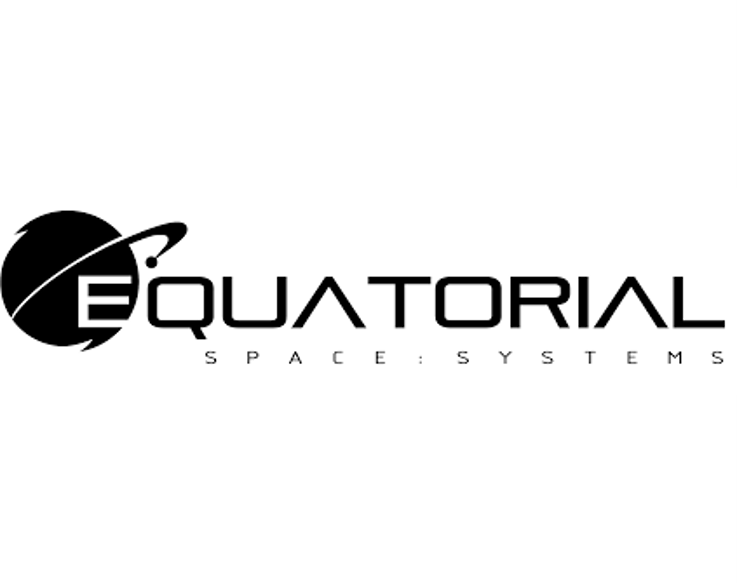
Equatorial Space Systems
Equatorial Space Systems developed a hybrid rocket propulsion system intended to make orbital launch better and effective. The company’s propulsion system uses a combination of liquid oxidizer and solid fuel to reduce the cost and risk of spaceflight, enabling space organizations to launch space vehicles for planetary or space missions safely and affordably.
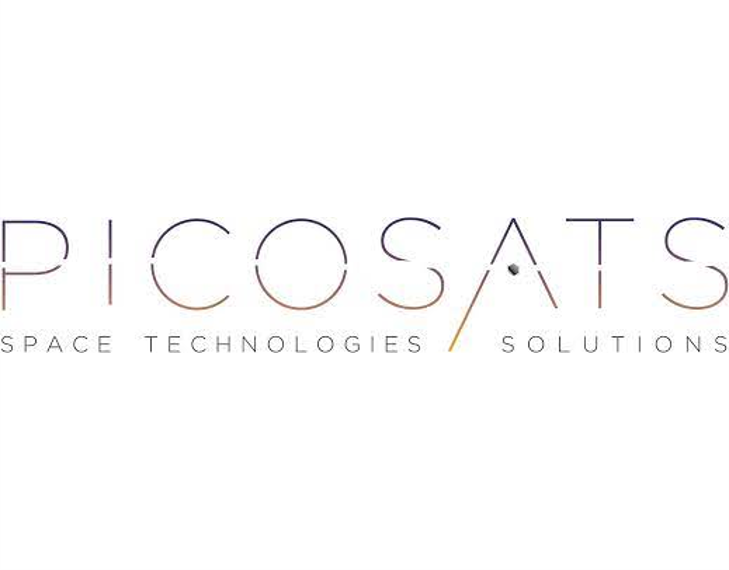
Picosats
Founded in 2014 in Italy, Picosats developed telecommunication systems for CubeSats. The company engages in the research and development of telecommunication systems allowing space-based communication services. Picosat also builds 3D printed CubeSats, lowering the amount of debris left at the end of their mission.

Starfish Space
The Washington-based startup was founded in 2018 and developed an orbital transportation infrastructure designed to provide in-space transportation and maintenance service. The company’s proximity operations software uses a combination of breakthrough orbital mechanics and a low-thrust electric propulsion system, enabling satellite companies to relocate, deorbit and extend the life of satellites.
Interested in a startup landscape or in an insights report?
Please fill out our contact form so that we can get back to you very quickly with our product offer.
Want to subscribe to our 123Fab?
Fill out our form to receive the latest insights into your inbox.
123Fab #56
1 topic, 2 key figures, 3 startups to draw inspiration from

Since the first flight using blended biofuel took off in 2008, more than 150,000 flights have used biofuels. In May 2021, Air France-KLM flew an Airbus A350 from Paris to Montreal with a 16% mix of sustainable aviation fuel (SAF) in its fuel tanks, produced in France by Total from used cooking oil. This example illustrates the growing concern to limit aviation-related emissions. Indeed, aviation will account for 3.5% of global energy-related CO2 emissions by 2030, compared to just over 2.5% today. Thus, the development and promotion of biofuels for aviation will be essential to reducing carbon emissions of the industry.
Biofuels are fuels derived immediately from living matter, plants or waste. Depending on the type of biomass used, they could lower CO2 emissions by 20–98% compared to conventional jet fuel. The biofuels with the highest emission savings are those derived from photosynthetic algae (98% savings, not yet a mature technology) and non-food crops and forest residues (91-95% savings), taking into account the GHG emissions associated with the production of algal oil but not with transportation.
Worldwide, major aviation players are showing an increased interest in this technology. As a first step, some pioneering airports have already integrated bio-jet fuels into their refueling systems. Today, five airports have regular biofuel distribution: Bergen, Brisbane, Los Angeles, Oslo and Stockholm. Long-term agreements between airlines (like KLM and Lufthansa) and biofuel producers are another sign of their commitment to the use of SAF. They now cumulatively cover around 6 billion liters of fuel (1.6% of total annual consumption).
Meeting this demand will require further production facilities. This is why some airlines have invested directly in aviation biofuel refinery projects or biofuel startups. The first example is a partnership announced in October 2020, between Virgin Atlantic and LanzaTech, on renewable jet fuel that will power planes from Shanghai and Delhi to Heathrow within two to three years. Recently, United Airlines has also joined the biofuel race, investing $30 million in Fulcrum BioEnergy. United Airlines will be both an investor and a regular customer of Fulcrum, a California-based company that has developed a technology turning municipal waste into sustainable aviation fuel. In January 2021, Qatar Airways announced it would invest in Byogy Renewables, a US startup that produces advanced biofuels (jet fuel and gasoline) from any source of bioethanol.
Corporate investment in biofuels is a rising and necessary trend, as most aviation biofuel production pathways are not yet mature. The four major ones are:
- HEFA bio-jets (Hydroprocessed Esters and Fatty Acids): a process that uses oleochemical feedstocks such as oilseed crops and fats. It is currently the only technically mature and commercialized process. It is therefore expected that HEFA will be the main biofuel used in aviation in the short to medium term.
- FT fuels (gasification through the FischerTropsch): a method that uses municipal solid waste or woody biomass as feedstock.
- SIP fuels (Synthesised Iso-Paraffinic): biochemical conversion processes, such as the biological conversion of biomass (sugars, starches or lignocellulose-derived feedstocks) into longer chain alcohols and hydrocarbons.
- ATJ fuels (Alcohol-to-jet based on isobutanol): a process that includes “hybrid” thermochemical or biochemical technologies; the fermentation of synthesis gas; and catalytic reforming of sugars or carbohydrates.
However, before we witness the widespread use of biofuels in aviation, several challenges must be overcome. The major constraint is the high cost of the technologies compared to fossil-based jet fuels. For instance, the production cost of HEFA is about $1,500/ton of bio-jet fuels, and fuel costs are the largest overhead expense for airlines, accounting for an average of 22% of direct costs. Secondly, to fulfill the potential of aviation biofuels, further technological developments are needed.
Policy frameworks have a key role to play in this crucial early phase of SAF industry development. Without a supportive policy landscape, the aviation industry is unlikely to scale biofuel consumption to levels where costs fall and SAF becomes self-sustaining.
To conclude, the aviation biofuels market is likely to grow exponentially. Several startups are seizing this opportunity and collaborating with larger players, such as airlines. Government support, through policies and financial incentives, is essential to secure this growth potential and pave the way for more decarbonized air transport.
2 Key Figures
43 sustainable aviation fuel startups
registered by Traxcn
The sustainable aviation fuel market is expected to reach $15.3bn by 2030
The global aviation biofuel market was estimated at $66 million in 2020 and is expected to reach $15.3 billion by 2025, at a CAGR of 72.4%
3 startups to draw inspiration from
This week, we identified three startups that we can draw inspiration from: BioRefly, Sundrop Fuels, and Fulcrum Bio-energy.

BioRefly
The German startup BioRefly is an operator of an industrial scale demonstration biorefinery to produce lignin-based aviation fuels. It is developing technologies allowing an increased and more economical utilization of selected renewable lignocellulosic raw materials for the production of second-generation biofuel for aviation.

Sundrop Fuels
This US startup is the developer of renewable energy technology. It is using a proprietary high-temperature bioreforming system to transform cellulosic biomass into clean, affordable, renewable gasoline, jet and diesel fuels. It uses a high-temperature solar gasification process that turns natural gas combined with any plant material into liquid transportation biofuels.

Fulcrum
Fulcrum is an American startup that produces sustainable fuel intended to reduce reliance on imported oil. The company’s technology involves a process of converting municipal solid waste into low-carbon transportation, enabling clients to provide customers with low-cost and low-carbon drop-in fuel that is competitively priced with traditional petroleum fuel.
Interested in a startup landscape or in an insights report?
Please fill out our contact form so that we can get back to you very quickly with our product offer.
Want to subscribe to our 123Fab?
Fill out our form to receive the latest insights into your inbox.
123Fab #55
1 topic, 2 key figures, 3 startups to draw inspiration from
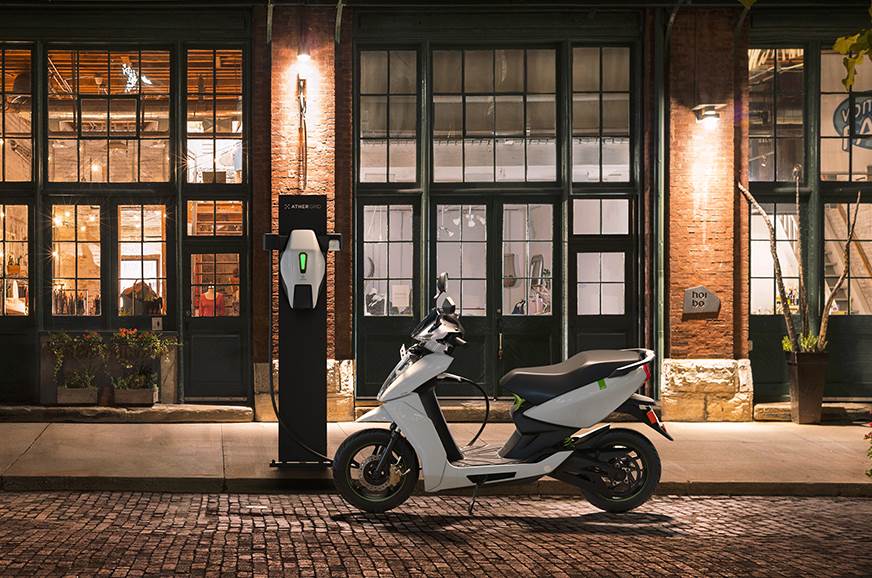
Last week Ola Electric — the electric vehicle arm of ride-hailing giant Ola — raised $100 million in debt from the Bank of Baroda. The money will be used towards closing the first phase of development of its 500-acre factory, which is expected to manufacture 10 million electric two-wheelers a year at full capacity and 15% of the world’s e-scooters by 2022.
Other two-wheeler manufacturers have made important announcements regarding their move into the electric segment. Harley-Davidson earlier this month introduced the first e-motorcycle under its new LiveWire brand. The company is entering the EV arena in the face of competition from several e-motorcycle startups that are attempting to convert gas riders to electric. One of the leaders is California-based startup Zero Motorcycles, which has 200 dealers worldwide. Meanwhile, Lime added a new member to its electric vehicle family in January: e-mopeds. Currently being piloted in Paris and Washington DC, these mopeds are manufactured by NIU, a Chinese company that also supplies mopeds to New York City-based mobility company Revel.
Before we proceed with our analysis, a note on terminology. Some people refer to e-mopeds as e-scooters or vice versa. For others, the term e-moped is used interchangeably with e-motorcycle. For clarity, at Aster Fab, we define e-motorcycles as electric vehicles with an engine size greater than 150cc, e-mopeds with an engine size smaller than 150cc. E-scooters have a floorboard that one can stand on and do not exceed a speed of 15mph.
As the electrification of the automotive industry advances, the electrification of two-wheelers is slowly following the same path, but with less enthusiasm. After the proliferation of e-scooters, the first e-mopeds and e-motorcycles are beginning to hit the market. While BMW has led the electrification efforts in the motorcycle market so far, the momentum for e-motorcycles is gradually building among major manufacturers. Relatively silent on the subject in recent years, Yamaha last month announced its commitment to achieving full lifecycle carbon neutrality for its products by 2050. The company sees itself selling 90% of electric motorbikes by 2050. Honda has also begun filing its first patents. E-motorcycles have less growth potential than e-mopeds, but this electrification revolution is driven by a combination of forces:
- Climate regulations and incentives — two-wheel EVs (E2Ws) and three-wheel EVs (E3Ws) are driven by government regulations and incentives to reduce carbon emissions. In China, internal combustion engine (ICE) engines were banned in 2011. More recently, e-motorcycles and e-mopeds will be exempt from paid parking as of January 2022 in Paris.
- Falling battery prices and lower total costs of ownership — over the next few years, the price of batteries is expected to drop from $200-$280 per kilowatt-hour to $90-$130. This is expected to decrease the cost of ownership and potentially propel demand.
- The emergence of innovative go-to-market models — battery-as-a-service is an example of an innovative model. By decoupling the battery from the sale of the vehicle, as well as greatly improving convenience through express refueling, this model reduces up-front acquisition costs.
- The desire for high-end connectivity — for some consumers, electric two-wheelers are more appealing than standard ICE vehicles because of their higher connectivity.
Despite government incentives, electric two-wheelers are facing the same barriers to adoption as the automotive market. Primary concerns are battery life, limited charging infrastructure and lack of models. For e-motorcycles, additional impediments include the range requirements of consumers (250 miles or more), lack of consumer acceptance (no sound, vibration or engine heat) and ultimately the lack of participation of major manufacturers. Thus, battery swapping will play a key role in accelerating electric two-wheeler adoption. Honda, Yamaha, KTM and Piaggio pushed further into this space in March by announcing their intention to create a swappable battery standard. Indeed, battery swap business models reduce or eliminate market barriers around extended charging times, range anxiety, high upfront costs and battery reliability because riders easily can carry and switch out batteries on the go. Quintessentially a two-wheeler country, India is an exception leading the way with its government incentives and its entrepreneurship (driven by Hero Electric, Ather Energy, Ampere, Okinawa and many more). Just like in China, Vietnam, Indonesia, Thailand, the Philippines, the high urban density rates and high percentages of households that own two-wheelers make these countries best suited for electric two-wheelers. In fact, more than 2 million electric rickshaws are currently running on Indian roads.
Globally the landscape is highly fragmented with many players competing intensely for market share. New entrants even dominate the market in some regions, preventing traditional OEMs from having the same market share as with ICE vehicles. At the same time, other players are tapping into the emerging opportunities associated with electric two-wheelers. Energy companies and utilities, such as Tata Power in India, are acquiring EV-charging infrastructure and capturing upstream value by expanding their offer to battery management systems. While Tier-1 suppliers are moving into new product segments such as electric power trains and retrofit kits. Thus electrification, along with vehicle automation and many other disruptions, is reshaping the traditional value pool.
In conclusion, it is undeniable that the two-wheeler market is gaining momentum worldwide (especially in emerging markets) and that well-established OEMs and startups are tapping into the opportunity to capture new value. Although adoption in the e-motorcycle segment is much lower than for e-mopeds, both markets are expected to grow in the near future, despite the widespread charging infrastructure required. Given the intimate link between electrification and autonomy, the unanswered question is whether it will be traditional OEMs or new entrants with strong software capabilities (such as Tesla in the automotive industry) that will lead the two-wheeler electrification revolution. For e-mopeds, pure players appear to be in a strong position given the low connectivity requirements, while the high battery requirements for e-motorcycles will likely force traditional OEMs to invest heavily in battery swapping technologies and join forces with software companies.
2 Key Figures
190 electric two-wheeler startups
registered by Traxcn
The electric two-wheel market is expected to reach $11.3bn by 2025
The global electric scooter, moped & motorcycle market was estimated at $5.8 billion in 2020 and is expected to reach $11.3 billion by 2025, at a CAGR of 14.2%
3 startups to draw inspiration from
This week, we identified three startups that we can draw inspiration from: Zero Motorcycles, Gogoro and Noil.

Zero Motorycles
Founded in 2006, Zero Motorcycles is a California-based manufacturer of electric motorcycles. Earlier this month, Zero Motorcycles launched its all new FXE model.

Gogoro
Founded in 2011, Gogoro is a Taiwan-based startup that developed a battery swapping refueling platform for urban electric two-wheel scooters, mopeds and motorcycles.

Noil
Founded in 2019, Noil is a France-based startup that retrofits thermal mopeds to electric in under 48 hours.
123Fab #54
1 topic, 2 key figures, 3 startups to draw inspiration from

On July 2nd 2021, Storegga and Carbon Engineering announced the creation of Europe’s first large-scale carbon dioxide (CO2) direct air capture (DAC) facility in the north east of Scotland. The facility plans to remove between 0.5M and 1M tons of CO2 from the atmosphere each year to help achieve the critical target of zero net emissions by 2050. Players will benefit from Scotland’s extensive offshore storage sites to permanently store CO2 deep below the seabed. This project is largely funded by the UK Department for Business, Energy, and Industrial Strategy to meet the government’s climate goals.
CCUS stands for Carbon Capture, Utilization, and Storage. It is the process of capturing carbon emissions for permanent storage in deep geological formations or for use in the production of fuels, chemicals, building materials, and other products containing CO2. Direct Air Capture is one of the carbon capture technologies that involves capturing CO2 directly from the atmosphere and not from industrial processes like the other methods. It is expected to play a key role in the transition to a net-zero energy system, as it can offset hard-to-abate emissions (aviation, heavy industries) and facilitate a faster transition. There are currently 15 direct air capture plants in operation worldwide, capturing over 9,000 tCO2/year. The main benefits of direct air capture as a carbon removal option are its limited land and water footprint and the possibility of locating plants close to suitable storage or utilization sites, thus eliminating the need to transport CO2 over long distances. However, the major challenge is to identify who is accountable and should pay for it, as the emissions captured are not linked to any precise site. Thus, to cover their costs, DAC companies have to sell the by-product, the CO2, or convert it into various valuable purposes.
Today, two technological approaches are used to capture CO2 from the air:
- Liquid DAC systems pass the air through a chemical solution, such as a hydroxide solution, that removes the CO2 while returning the remaining air to the environment
- Solid DAC systems use sorbent filters that chemically bind to CO2. When the filters are heated, they release the concentrated CO2, which can be captured for storage or use.
Both solid and liquid capture technologies can be powered by renewable energy sources (such as geothermal, solar PV, and wind). Solid DAC can also be powered by recovering waste heat, which signficantly reduces lifecycle emissions. Emissions from the DAC process must be taken into account when measuring the total CO2 impact of the process. A clean energy source is therefore essential to enable both negative emissions and low-carbon fuels.
DAC technologies have improved very rapidly in recently years with increasing financial support. Many public and private players are becoming aware of the need to reverse climate change and are investing in R&D and startups. In August 2020, the leader Climeworks raised $110M from private investors, the largest ever investment in DAC. There are also incentives such as Elon Musk’s XPrize Carbon Removal that challenge designers to develop machines to extract large amounts of CO2 directly from the atmosphere or oceans for $100 million. In terms of government support, the U.S. Department of Energy (DOE) announced in June $12 million in federal funding for six R&D projects that aadvance DAC technology. They are creating tools that will increase the amount of CO2 captured by DAC, lower the cost of materials, and improve the energy efficiency of carbon removal operations.
However, all the support goes to a limited number of players, as the market is very concentrated. Only a dozen or so startups benefit from it and concentrate breakthroughs and partnerships with key players or corporates. A very recent innovative start-up is Co2Rail which seeks to enhance DAC by using train-loaded modules to help improve airflow and thus capture CO2. Their systems are fitted to trains already in regular service. Co2Rail uses the significant amount of wasted energy produced by the dynamic braking system of freight trains to power their direct air capture systems. This unique approach can enable gigaton-scale CO2 capture in an energy-efficient manner, making it affordable for downstream CO2 users to make economical use of the captured CO2. Climeworks has signed agreements with both Carbfix, a pioneer carbon storage start-up, and ON Power, the Icelandic geothermal energy provider, to lay the foundation for a new plant that will significantly scale up carbon removal and storage in Iceland. The new plant will be able to permanently remove 4,000 tons of CO2 from the air per year, safely stored through natural underground mineralization.
Unlike on-site CO2 emission capture, large corporations rely heavily on these startups, rather than developing technologies in-house. They often join forces with them to secure access to this crucial technology. For instance, United Airlines said last December that they would invest in DAC start-up 1PointFive. Occidental Petroleum has signed a partnership with Carbon Engineering to build a plant that will capture up to 1 MtCO2 each year, used in enhanced oil recovery, to be operational in 2023.
However, there are still many challenges and obstacles to overcome in order to implement large-scale DAC facilities. Several large-scale demonstrations are still needed to refine the technology and reduce capture costs. Indeed, DAC is the most expensive carbon capture approach because the CO2 in the atmosphere is highly diluted, which contributes to higher energy needs. Costs and energy needs vary according to the type of technology (solid or liquid) and whether the captured CO2 is to be stored geologically (where it has to be compressed at very high pressure) or used immediately at low pressure. The future cost of direct air capture is uncertain, typically ranging anywhere from $100/tCO2 to 1,000/tCO2, while industrial CO2 capture is more likely to range between $35/tCO2 and $60/tCO2.
In the near term, large-scale demonstration of DAC technologies will require targeted government support, including grants, tax credits, and public procurement of CO2 offsets. Technology deployment may also benefit from corporate sector initiatives and pledges to become carbon-negative, such as Microsoft’s announcement of a $1 Bn climate innovation fund for carbon reduction, capture and removal technologies. Longer-term deployment opportunities will be closely linked to robust CO2 pricing mechanisms and accounting frameworks that recognize and value the negative emissions associated with storing CO2 captured from the atmosphere.
To conclude, carbon removal technologies such as direct air capture are not an alternative to cutting emissions or an excuse to delay action, but they can be an important part of the suite of technology options used to achieve climate goals. For this reason, direct air capture needs to be demonstrated at scale, as soon as possible, to reduce uncertainties about deployment potential and costs, and to ensure that these technologies can be made available to support the transition to net-zero emissions and beyond.
2 Key Figures
18 DAC startups
registered by Pitchbook
DAC market expected to reach 833 million MtCO2 by 2050
The global DAC market was estimated at 6,370 MtCO2 in 2020 and is expected to reach 833 million MtCO2 by 2050, at a CAGR of 240%
3 startups to draw inspiration from
This week, we identified three startups that we can draw inspiration from: Carbon Engineering, Global Thermostat, and Heirloom.

Carbon Engineering
Founded in 2009, Carbon Engineering is a Canadian-based clean energy start-up that uses direct air capture technology at a large scale so it can be permanently and safely stored deep underground or turned into ultra-low carbon synthetic fuels, enabling clients to address their carbon footprint and achieve critical net-zero targets by providing a tool to deliver climate-relevant quantities of permanent carbon removal, and delivering clean, affordable energy to the world.
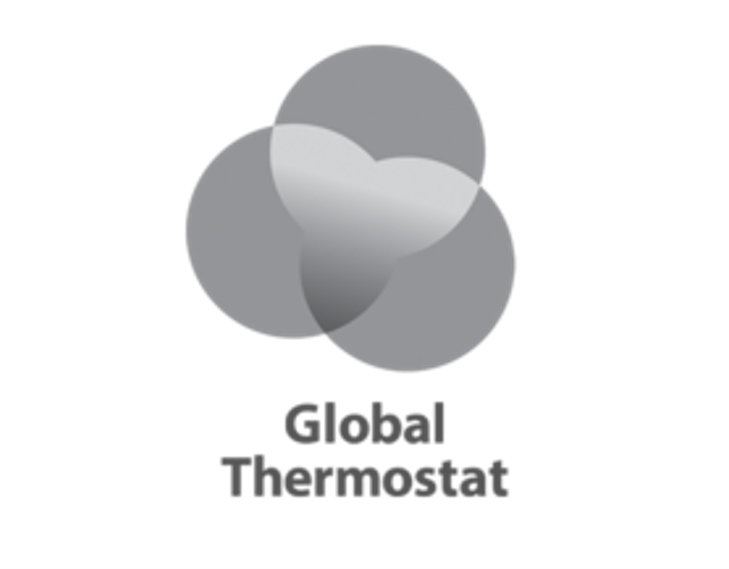
Global Thermostat
Global Thermostat is a US-based start-up focused on developing technology solutions for direct air carbon capture. It has a patented technology working with CO2 directly from air or from industry smokestacks. The technology uses residual heat to capture more CO2 than power plants or industrial facilities emit. The captured CO2 has multiple applications such as carbonating beverages.

Heirloom
Heirloom Carbon Technologies is an American start-up that aims to remove 1 billion tons of carbon dioxide using carbon mineralization for a cost-effective direct air capture system. The company’s system deploys carbon dioxide removal at a gigaton-scale that captures and processes atmospheric CO2 and minimizes second-order impacts and reduces extraction, thereby helping in restoring the atmosphere using natural processes.

Institut Choiseul – The new conquerors of the economy
It is a study carried out independently by the Institut Choiseul. It identifies, lists and ranks the 150 leading companies that are conquering their markets and highlights their leaders. The New Conquerors of the Economy ranking pays tribute to the structures that lie between the start-up nation and the CAC 40 companies. To carry out this ambitious and unique study, the Choiseul Institute called on numerous experts and screened several hundred companies in order to establish a ranking that respects the major geographical and sectoral balances.
The partners
Within the framework of Choiseul – The New Conquerors of the Economy, the Institut Choiseul has benefited from the support of partners whom we would like to thank: Forbes, Antidox, Aster Fab, BNP Paribas, BNP Paribas Banque Privée, BNP Paribas Développement, Mawenzi Partners and Progress Associés.
The support and confidence of all these players were essential to the completion of our work, the publication and distribution of this unique and innovative ranking.

123Fab #53
1 topic, 2 key figures, 3 startups to draw inspiration from

On July 2nd 2021, a fire on the surface of the Gulf of Mexico erupted after a gas leak from an underwater pipeline sparked a blaze. Although the fire was extinguished 5 hours later by state-owned oil company Pemex and the company claims that there was no leak, hundreds of such industrial accidents occur every year worldwide.
In recent years, the reliability of the power grid has often been put in the spotlight. Grid operators are faced with 4 main challenges:
- The aging infrastructure: the vast majority of energy transmission and distribution lines, as well as oil & gas pipelines, were built in the second half of the 20th century with approximately a 50-year life expectancy. The network is therefore aging and many lines have exceeded their intended lifespan. According to Black & Veatch, 60% of electric distribution lines in the US have surpassed their 50-year expectancy.
- The severe weather events: aside from aging, the grid was not originally engineered for severe weather events. According to a study carried out by the EU, annual spending in Europe to fix climate change-related damage to energy infrastructure was estimated at €500 million in 2018. This figure was set to grow exponentially by 400% by 2020, by 860% by 2050 and by 1,600% by 2080.
- The increasing demand: global demand for energy is increasing rapidly, because of population and economic growth. The US Energy Information Administration (EIA) projects a 48% increase in global energy consumption between now and 2040. New infrastructure will need to be built to absorb future energy demand, especially in remote areas.
- The integration of renewables: the transition from traditional fuel to renewable energy sources is putting the grid under further strain. Firstly because most renewable sources are located remotely requiring additional long-distance, high‐capacity transmission to match supply with demand. Secondly, renewables complicate the management of the grid because they are variable – they depend on the weather.
In other words, traditional power grids are not designed to meet today’s emerging trends, such as the greater penetration of distributed generation resources, the need for greater resilience and renewable intermittency. Thus, there is a real need for utilities and developers to make substantial investments to replace, upgrade and expand new and existing transmission and distribution (T&D) infrastructure.
New technologies are emerging to transition to a new type of grid, a modern one, with the potential of addressing today’s grid challenges. These include dynamically optimizing grid operations and resources, detecting and mitigating disturbances, integrating diverse generation sources, providing strong protection against physical and cyber risks, etc. Among the segments of the value chain, the greater focus of the smart grid is on distribution. Transmission systems are already equipped with extensive sensing and control, which are enhanced by newer technologies (synchrophasors, associated controls, decision-support systems, etc), whereas distribution needs emphasis.
Some innovations have already begun to change the landscape. In the electric grid, technology has moved from electromechanical meters to automated meter reading (AMR) to advanced metering infrastructure (AMI). These smart meters are capable of sensing energy, voltage, power quality and more. AMI meters allow utilities to perform actions at a level unforeseen in the past, so much that the scope for innovation in the data space remains huge. Energy storage has also opened up opportunities to store energy when it is cheap and discharge it when it is expensive. RTE, France’s transmission system operator, is running a pilot to automate storage and injection orders via a smart grid platform controlled by an intelligent robot. In the oil & gas industry, pipeline leakage technologies have emerged. In September 2020, BP announced a $5m investment into Sateltyics, which uses machine learning and spectral imaging to predict and counteract dangerous pipeline leakages. On the flip side, the multitude of sensors and connected devices has resulted in many points that can now be hacked. The ransomware attack on Colonial Pipeline Co. two months ago ignited concerns about cybersecurity in Europe, where lawmakers are drafting laws to improve the way energy companies protect themselves against hackers.
The innovations brought to market by startups are mainly software. In fact, experts say that much of the value to be captured by smart grids lies in the data and software improving operations and maintenance. Startups using software and new materials to compensate aging infrastructure include:
- AiDash uses machine learning algorithms to analyze satellite images and infer the encroachment of vegetation on power lines to avoid outages
- Grid4C uses AI to detect, diagnose and predict malfunction and inefficiencies for assets on the grid, without the installation of expensive hardware
- Depsys develops power-grid modular systems designed to help grid operators to seamlessly integrate the increasing amount of renewable energy sources
- ALD Technical Solutions repairs, retrofits and upgrades offshore and onshore infrastructures using high quality and high-performance composite materials
Microgrids are another alternative to the aging energy grid. Fed by distributed sources, such as solar panels or diesel generators, this resilient alternative can keep a local network powered when the main grid is down – whether due to a cyberattack, a natural disaster or even a breakdown. Microgrids helped Australia get power back after the bushfires last year.
To conclude, the aging of energy infrastruction opens the way for more systemic thinking. Rather than replacing the existing infrastructure, a national reflection is underway to redesign an entirely new system capable of meeting the challenge of renewable energies grid integration. Given the high investment new infrastructure represents, budget prioritization upstream and selection of the technologies to be implemented will be crucial.
2 Key Figures
780 smart grid startups
registered by Tracxn
Smart grid market expected to reach $92.1 Bn by 2026
The smart grid market is estimated at $29.3 Bn in 2019 and is expected to reach $92.1 Bn by 2026, at a CAGR of 17.8%
3 startups to draw inspiration from
This week, we identified three startups that we can draw inspiration from: Grid4C, Envelio, and Scale Microgrid Solutions.
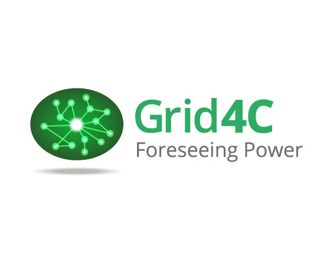
Grid4C
Grid4C’s solutions use smart meter and IoT data to predict, detect, and diagnose faults and inefficiencies for grid assets and home appliances, without the need for hardware or sensor installations.
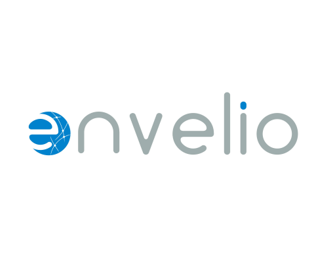
Envelio
Envelio’s platform helps network providers integrate renewable sources and electromobility by offering a digital assistance system for technical planning and operations processes.
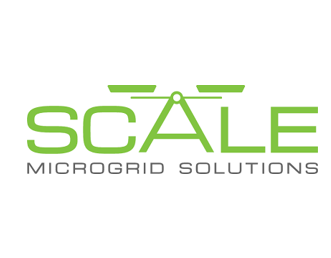
Scale Microgrid Solutions
Scale Microgrid Solutions delivers sustainable and reliable power to commercial and industrial customers by deploying unique, fully-financed microgrids and distributed energy solutions.
123Fab #52
1 topic, 2 key figures, 3 startups to draw inspiration from

In June 2021, to meet the increased demand for bioprocessing assemblies, Entegris announced that it would invest $30 million to expand three manufacturing facilities. If the idea of using living components in industrial processes is not new – humans were already using yeast to make bread and beer in 4,000 BC – today, bioprocessing is taking it to the next level.
Bioprocessing is any process that uses complete living cells or their components (e.g., bacteria, enzymes, chloroplasts) to obtain their desired products. It is key to several emerging industries and technologies, including the production of renewable biofuels such as ethanol and biodiesel, therapeutic stem cells, or new vaccines. Bioprocessing has several advantages. First, it is an extremely efficient process (a small amount of enzyme quickly yields a lot of product) that operates under mild conditions, thus saving energy. The products are biodegradable and pure and the process is safe (any contamination by an enzyme or known microbe is harmless) and waste-free.
The bioprocess consists of an upstream and a downstream stage. Upstream bioprocessing is the first step in which the microorganisms or cells are grown. They go through several stages of cultivation in a controlled environment within a bioreactor, to be multiplicated. Then, downstream bioprocessing is there to meet purity and quality requirements through cell isolation and purification. Five main types of technologies can be used:
- Conventional bioreactors: These are manufactured systems that support a biologically active environment.
- Single-use bioreactors: These are bioreactors equipped with a disposable bag or instead of a reusable culture vessel. This reduces the cross-contamination risk, requires fewer maintenance requirements and less stringent validation protocols for regulatory approvals.
- Cell culture media: These encompass gels or liquids compounds and nutrients created to support the growth of cells in artificial environments.
- Filtration & concentration: The two types of filtration used in bioprocessing are Direct Flow Filtration (DFF) that uses a single pass of the process fluid through the filter membrane, and Tangential Flow Filtration (TFF), where the process fluid flows parallel (tangential) to the membrane surface.
- Process chromatography: It consists of a pilot- or process-scale system used to separate and purify biomolecules.
The innovations associated with these technologies partly explain the increasing adoption of bioprocessing. First, productivity has increased during the upstream process thanks to new micro-bioreactors (like the Ambr of Sartorius) that allow rapid screening of a large number of media, feeds, and operating conditions such as temperature to determine those producing the highest titers. There are also innovations in the downstream process, with the use of new proteins for purification or improved architecture of the chromatographic resins for faster flow rates. Companies like Pall are continuously working on such innovative solutions. Finally, the switch from batch to continuous bioprocessing, to develop more efficient processes and to reduce time and costs, is enabled by new precisely controlled valves, sensors, and filtration technologies (inline ultrafiltration, diafiltration).
These innovations have an impact on several industries. The main application sectors are biopharmaceuticals, agriculture and food, energy, and waste treatment. Many startups are addressing this surging market in various fields. The American start-up Mango Materials has developed a patented, low-impact biological process that produces bioplastic from methane. Methane from landfill facilities is converted into biodegradable plastic by non-genetically modified bacteria. Their solution is competitive with conventional petrochemical-based plastics and has a capacity of over 10 million pounds of bioplastic per year. Bioprocess engineering in the agriculture and food industry offers opportunities to design and produce new or improved agricultural and food products and their manufacturing processes. In the energy sector, bioprocessing is more and more used for producing biofuels. Start-up TerViva, backed by agricultural-technology businesses, uses the Pongamia plant to produce oil from its seeds. Pongamia produces ten times more amount of oil per acre than soybean and requires only a fraction of resources (water, fertilizers, and pesticides). On top of biodiesel and renewable diesel, Pongamia seed oil can be converted into lubricants, animal feed supplements, or fertilizer. Algae is another way of bio-producing biofuels. The American startup Algenol produces ethanol by using algae, sunlight, CO2, and seawater. When it comes to large corporations, the use of bioprocessing is often limited to specific activities, notably biopharmaceuticals, and the scale. For instance, GE Healthcare (General Electric) reported revenues of $1.5 billion in 2015 from bioprocessing and acquired in 2017 the bioprocessing startup Puridify.
While bioprocessing is a mature field, challenges remain. First of all, the transition from batch to continuous operation is a source of complexity (investment in equipment, process updates, contamination risks, etc.). Furthermore, bioprocessing 4.0 still has progress to make, in terms of digitalization of processes and more systematic data collection and analysis.
To conclude, bioprocessing is becoming an increasingly used technique in various fields. While regulations and norms may be a hindrance in the pharmaceutical industry, in other sectors such as waste treatment, bioprocessing has a huge untapped potential. Single-use bioreactors are expected to be the most widely adopted in the coming years as they are more flexible and can be set up into operation very quickly.
2 Key Figures
180 bioprocessing startups
registered by Tracxn
Global bioprocessing market expected to reach $51.9 Bn by 2028
The global bioprocessing market is estimated at $19.4 Bn in 2021 and is expected to reach $51.9 Bn by 2028, at a CAGR of 16.0%.
3 startups to draw inspiration from
This week, we identified three startups that we can draw inspiration from: Ingenza, Microvi, and Cytoo.

Ingenza
Founded in 2002, Ingenza is an industrial biotechnology startup with a broad customer base across the chemicals, pharmaceuticals, food, feed and fuel industries. They apply synthetic biology to the manufacture of industrial products including enhanced biofuels, sustainable manufacturing of chemicals and the production of protein therapeutics. They also license their proprietary bioprocess technologies.

Microvi
Microvi is a biotechnology startup that discovers, develops, manufactures, and commercializes innovative biocatalytic solutions for the water, energy, and chemical industries. Its MicroNiche Engineering platform is a microenvironment of biological systems is precisely designed to enhance microbial life and optimize metabolic performance.
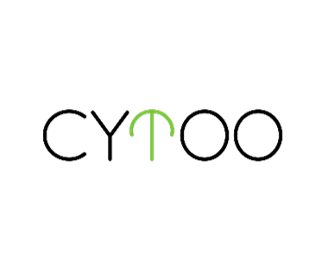
Cytoo
Cytoo is a French startup that develops, manufactures, and distributes products that make cellular analysis robust and reliable by dramatically decreasing cell variability. Their portfolio includes a proprietary cell adhesive micropattern technologies to target High Content Screening and Analysis companies within the large cell biology market.
123Fab #51
1 topic, 2 key figures, 3 startups to draw inspiration from

Behind the concept of the autonomous car lies 6 levels of automation ranging from 0 (classic car) to 5 (fully autonomous). Today, most commercially available vehicles are at most level 2: partial automation. At level 3, the vehicle can take full control of driving in certain situations (such as in traffic jams) — these vehicles are just coming to market.
Over the past decade, there has been much hope that automated cars would arrive in the near future, but now this prospect seems more remote, with the sale of Uber’s self-driving department 6 months ago not boding well for the industry in the short term. So what went wrong? What are the issues that the carmakers’ $120Bn investment over two years could not solve?
Part of the answer lies in the myriad of potential situations one may encounter while driving. Autonomous cars work well in controlled environments, but to achieve level 4 or 5 autonomy, i.e. letting go of the steering wheel for most of the journey, they need to be fully prepared for any situation (e.g. snow covering road markings, areas with no coverage, street lighting malfunctioning, jaywalking pedestrians, etc.). Thus, training artificial intelligence is essential for its public adoption, which is what OEMs, startups and Tier-1s are doing.
Training of algorithms for the multiplicity of situations
One step towards fully autonomous driving is to assess the safety of the AI driving model and highlight its blind spots to improve training on these cases. Startups such as Phantasma Labs have developed a virtual testing environment to assess the model’s behavior when confronted with Vulnerable Road Users (VRUs) such as pedestrians or cyclists. The model is faced with millions of situations involving machine learning-based VRUs in order to study the driving and address the mishandled situations. Other unexpected objects can disrupt driving. If traffic signs, stands, barriers, or excavators on the road seem straightforward to avoid for a human driver, it is more difficult for AI that has never encountered it before. Deep Safety offers annotated datasets dedicated to training models for the construction or road work industry. Its own trained AI identifies unknown objects encountered, raising an alert for the driver to take over. To evaluate the general safety of a model’s driving skills, Ivex proposes a safety assessment tool that provides KPIs on the safety of trajectories taken by the autonomous driving system, either in simulation or on real driving data, to spot potential improvements.
Drawing on as much data as possible
It seems unlikely that traditional cars will disappear in the near future and the behaviour of human drivers is harder to predict than that of driverless cars. Startups are also addressing the subject by connecting traditional and driverless cars. Valerann builds road sensors that gather information for autonomous vehicles about their in-lane location, even when the markings are not visible. They also connect classic cars to driverless vehicles by sharing their exact location and predicted trajectory, spotting abnormal driving behavior, and warning surrounding cars of danger. Eyenet offers collision prediction software based on GPS data from phones and AI that could be used to connect regular vehicles to autonomous ones and detect and prevent potential collisions. All this information is very valuable. The more accurate real-time data the model has, the easier it is to make the right decision.
React as quickly as possible
Training more complex models, fed by more information and capable of handling a wider range of situations, comes at a price. In the case of autonomous vehicles, every millisecond counts in the decision-making process, which puts great pressure on the data transmission process as well as on the computational power that can be installed in the car. Regarding data transmission, 5G and smart cities will have a great role to play, and the technology is on its way. When it comes to enhancing the car’s computational performance, edge computing seems to be the most promising answer. Unlike cloud computing, where calculations are performed on a remote server, far from the data, edge computing solutions offer calculations in microdata centers, relatively close to the car. This proximity tackles two problems: firstly, for autonomous cars, lag would have disastrous consequences and the lagging risk in communication is reduced when the data is sent to a closer location. Secondly, privacy is increased and the hacking risk is reduced as the data arrives in a smaller, more controlled environment than the cloud. Vapor.io provides microdata centers designed for edge computing that could be used for autonomous vehicles. Quadric.io is developing edge computing processors optimized for real-time calculation that will allow deeper models to be run. AlphaIcs has also developed its Real AI Processor (RAP), an edge computing solution designed for heavy AI applications like real-time automated driving. Together, these solutions address the trade-off between computing power and network latency for autonomous cars.
Startups appear to be leading the way in fully autonomous car innovation, thanks to massive funding from OEMs: Toyota and Aurora announced a partnership 4 months ago to produce mass autonomous vehicles for ride-hailing networks like Uber. Last year, Jaguar Land Rover partnered with Waymo to develop Waymo’s driverless fleet, and Volkswagen invested $1 billion in Argo’s self-driving technology and its Autonomous Intelligent Driving department became part of Argo.
It is difficult to assess when, or even if, autonomous vehicles will be the most represented on the road of the future, but applications are definitely emerging be it for ridesharing, trucking, or deliveries, market leaders are investing and technology is going forward.
2 Key Figures
129 self-driving car startups
registered by Tracxn
Global autonomous car market expected to reach $1,642 Bn by 2025
The global autonomous car market was estimated at $818.6 Bn in 2019 and is expected to reach $1,642 Bn by 2025, at a CAGR of 17.4%
3 startups to draw inspiration from
This week, we identified three startups that we can draw inspiration from: Phantasma Labs, Quadric.io and Eyenet.
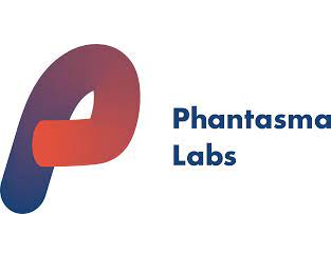
Phantasma Labs
Founded in 2018, Phantasma Labs is a Berlin based startup that developed artificial intelligence-based massive simulations designed to improve self-driving automobiles. The company’s platform generates a substantial amount of data-sets related to real-life situations at scale for self-driving cars, models the behavior of pedestrians, cyclists and other road users in large-scale simulations in virtual scenarios, enabling autonomous vehicle makers to learn from real-life situations without the consequences of accidents.

Quadric.io
Based in California, Quadic.io developed an edge processor designed to meet the needs of next-generation autonomous products, Industrial IoT products, and robots. The company’s processors can be incorporated into a wide range of products that require instantaneous processing of real-world data streams with minimal power and maximum speed as well as commute safely, industrial robots to complete critical tasks and create human interaction with machines, enabling developers to empower with tools to create tomorrow’s technology today.

Eyenet
Created in 2018, Eyenet developed a collision prediction and prevention software-based platform designed to addresses safety challenges in the shared mobility landscape. The company’s platform incorporates AI-powered algorithms that calculates user location and collision probability as well as utilizes a sophisticated probability analysis for spatial cross-correlation of bearing, velocity and acceleration to determine an imminent collision.
